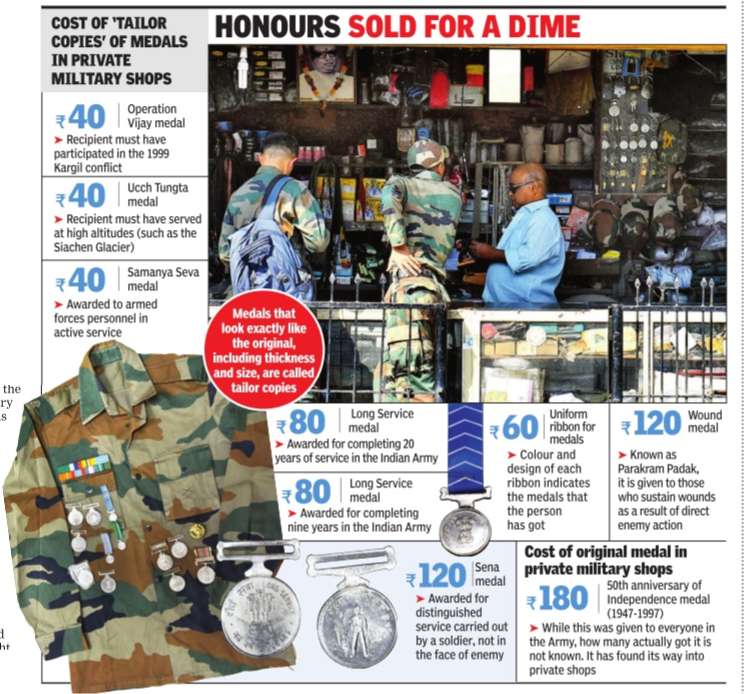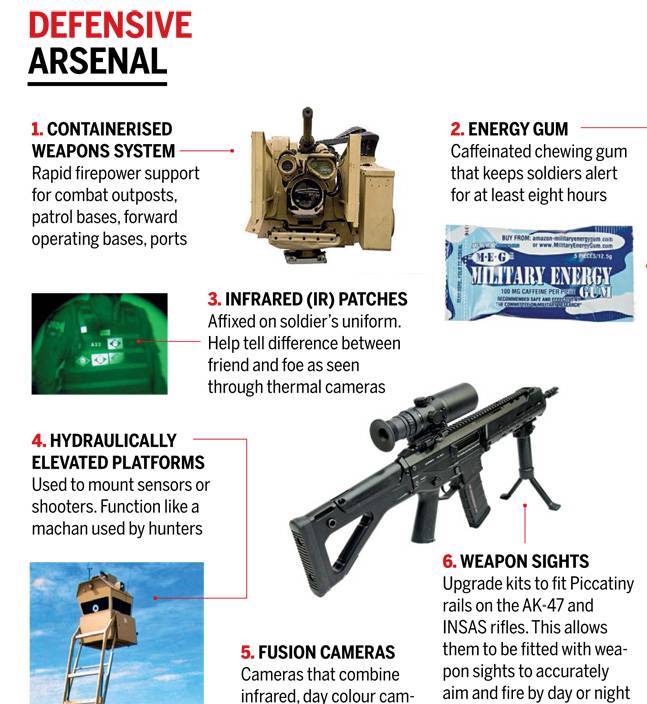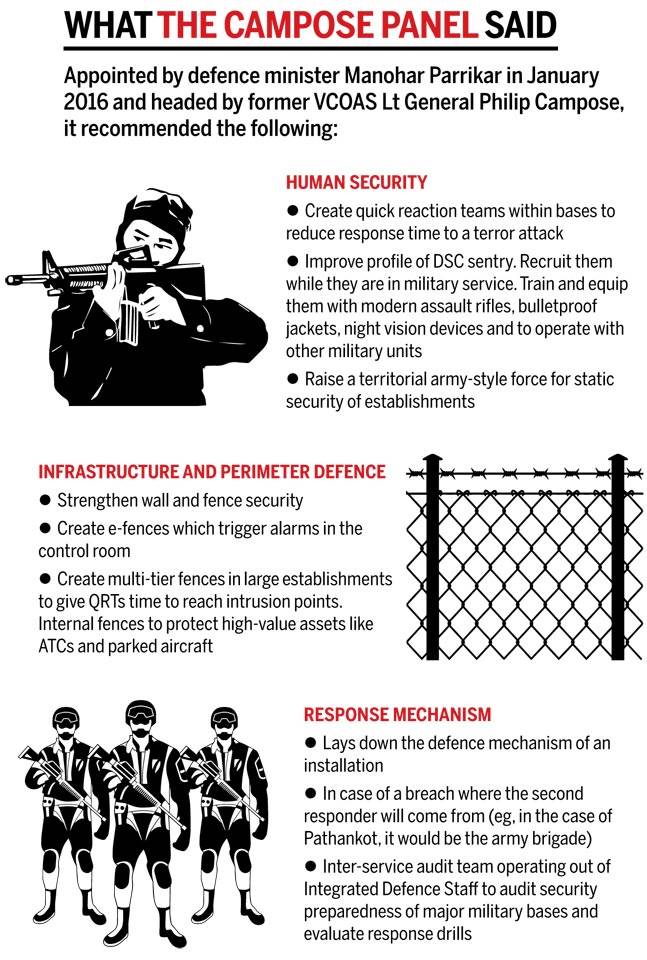Indian Army
This is a collection of articles archived for the excellence of their content. |
Contents |
Animals used by the Army
Retired army dogs , horses and mules to get new lease of life
In what could be a new lease of life for Indian Army dogs, horses and mules which are routinely put to sleep after their retirement, the force is building special facilities to house them and are in talks with NGOs for giving them up for adoption.
However, not many NGOs in the country have the facility to take care of about 1000 horses and mules that retire every year.
“Every year about 50 dogs and about 1000 horses and mules retire. The Army is building special facilities in different places in the country to house them after their retirement,” defence sources said.
They said that while dogs can easily be taken up by people through adoption, keeping horses and mules is a big problem.
“Maintaining cost for horses are high. Not to forget the space and infrastructure that would be needed,” sources said.
The government had in September informed the Delhi High Court that it would come out with a policy on the issue within six months.
The practice of euthanasia will be stopped under this policy, which will also give details of the arrangements to be made for these animals after they retire, the High Court was told.
Additional Solicitor General (ASG) Sanjay Jain said the policy was being formulated and the issues raised in a writ petition, which sought an end to the practice,were under active consideration.
Though a final policy is yet to be adopted, the Army has ceased further killing of ageing animals, except for those suffering incurable, terminal diseases and injuries.
The army has also been asked by the Defence Ministry to deal with the cases of animals suffering from incurable diseases, injuries and terminal diseases as per the provisions of Section 13 (3) of the Prevention of Cruelty to Animals Act, 1960.
The development came in the backdrop of the court’s direction to seek instruction in the matter relating to killing the dogs which have served national security by sniffing bombs, hunting down enemies, locating secret places and fetching evidence.
The Army generally uses Labradors, German Shepherds and Belgian Shepherds, depending on the altitude and weather, besides the nature of assignment which may include routine patrol to explosives detection.
The court had earlier observed that the respondents had admitted that the current practice of putting Army service dogs to sleep was against the provisions of the Prevention of Cruelty to Animals Act, 1960. (PTI)
Appointment
Supersession in appointments
Dinakar Peri, Seniority avoided in appointments, January 18, 2017: The Hindu
Please see:
Seniority done away with in another Army appointment
After setting aside the guiding principle of ‘seniority-cum-merit’ in the appointment of General Bipin Rawat as the Chief of Army Staff, in appointing the Engineer-in-Chief, who heads the Military Engineer Services and the Corps of Engineers, the government has superseded the seniormost officer Lt. Gen. Vishwambhar Singh, Director General Weapons & Equipment. Instead, it has appointed Lt. Gen. Suresh Sharma, who was Director General-Border Roads.
The move comes after the government, in a surprise move, superseded Eastern Army Commander Lt. Gen. Praveen Bakshi in the appointment of the 27th Army Chief, which had caused considerable concern in the service.
The present Engineer-in-Chief, Lt. Gen. Sanjiv Talwar, is set to retire by the end of the month, and the designate Lt. Gen. Sharma is supposed to take charge on February 1. The appointment has been cleared by the Appointments Committee of the Cabinet (ACC) headed by the Prime Minister.
The Engineer-in-Chief is an advisor to all three service chiefs. “Generally, the appointments are by done on the principle of ‘seniority-cum-merit’. Technically, Lt. Gen. Singh is senior, but it was the government’s call,” a source said.
An engineering officer pointed out that it has been the tradition to appoint the seniormost officer to be the Engineer-in-Chief. “At least in my memory, the seniority has not been scuttled. This was very surprising,” he said.
As per procedure, the Army Headquarters forwards a list of eligible officers to the Defence Ministry. The Defence Minister then puts down his recommendations and sends the file to the ACC, which makes the final selection.
Of the two officers, Lt. Gen. Singh is from the architects cadre, while Lt. Gen. Sharma is from the engineers cadre. “We were told that they preferred someone from the engineering stream at the top post,” a civilian officer in the Corps of Engineers said. Speaking last week, Gen. Rawat said that the issue of choosing Army Commanders through a selection board rather than by seniority alone would be debated. “I believe in a system of consensus. This is an issue which has not been addressed earlier but we will certainly take up with the Army Commanders to see how they feel,” he had said.
Border management policy/ rules
LAC: forces get ‘full freedom’ to respond/ 2020
June 22, 2020: The Times of India
The armed forces have been given “full freedom” to respond in an “adequate and proportionate manner” to any hostile act in accordance with their judgment, officials said after defence minister Rajnath Singh reviewed operational readiness along the Line of Actual Control LAC) with the military brass here.
India is determined to impose costs on Chinese troops if they attempt any further misadventure on the border, the officials said.
The decisive shift away from the long-standing border management policy to largely maintain “peace and tranquillity” on the LAC gives the military commanders on the ground the leeway to undertake whatever action is required to foil any misadventure by the PLA.
“This obviously includes freedom to the commanders to order troops to open fire in the face of extreme provocation and extraordinary situations like the one near PP-14 on June 15,” the official said.
TOI in its edition of June 18 had front-paged a report saying a decisive shift was underway in both strategy and protocol, that the Army would no longer allow “walk-in” intrusions along the LAC, and that the understanding on use of firearms was being reviewed. Sources said diplomatic talks are likely to be held with China in a bid to break the military stalemate on the ground.
‘Don’t start fights, but don’t hold back in case of intrusion’
They (Army personnel) have been told not to start a fight, but also not to hold back in the event of any ground intrusion or breach of airspace. The Army, Navy and IAF reported satisfactory levels of preparedness and high operational alertness along the LAC,” an official said. The hour-long meeting chaired by Singh, who is slated to leave for Moscow on Monday, was attended by chief of defence staff General Bipin Rawat and the three Service chiefs, General M M Naravane, Admiral Karambir Singh and Air Chief Marshal RKS Bhadauria.
A second meeting between 14 Corps commander Lt-General Harinder Singh and South Xinjiang Military District chief Major General Liu Lin is also on the cards, on the lines of the one they held at the Chushul-Moldo border personnel meeting point in eastern Ladakh on June 6. This week, MEA joint secretary in charge of China, Naveen Srivastava, will hold a second virtual conference with his counterpart in Beijing to bring about a diplomatic resolution to the crisis. This will be the second conversation between Srivastava and Wu Jianghao, director general in the Chinese ministry of foreign affairs after June 5.
With both India and China having amassed troops and heavy weapons all along the 3,488-km LAC, and no signs of any de-escalation in the troop confrontations in eastern Ladakh, “a high-level politico-diplomatic intervention may be required due to the continuing deadlock”, another official said.
TOI was the first to report on June 18 that the skirmish near ‘Patrolling Point-14 (PP-14)’ in the Galwan Valley region of eastern Ladakh, which left 20 Indian soldiers dead and 76 injured on June 15, had led India to decide that “costs” would now be imposed on the PLA if it tries with its old tactics of incrementally grabbing territory.
Medals
Non-gallantry medals can take 10 years to arrive
Sushil Rao , Non-Gallantry Medals Take As Long As 10 Yrs To Come, Jan 25, 2017: The Times of India
Army personnel, both retired and serving, awarded for their service are forced to buy replicas of the medals from private shops as the Army takes several years to deliver the originals.
The replicas, which are called `tailor copies', can be bought for as low as Rs 40 to Rs 180 from private outlets at Lal Bazar, Regimental Bazar, Mehdipatnam and Golconda in the twin cities of Hyderabad and Secunderabad. Defence ministry sources in Delhi confirmed that the backlog of non-gallantry medals runs as far back as 10 years.
A TOI investigation has revealed that one would have to shell out as less as Rs 2,500 for a complete uniform with all the medals, complete with the badges.Except for the gallantry awards, a `tailor copy' of practically every medal is up for sale.However, gallantry medals, which have the name and Army number of the recipient engraved on them, cannot be bought from a private shop.
“Yes, I bought nine out of 10 medals from private shops,“ admits Mohammed Rafee, who put in 24 years of service in the Army . Rafee was awarded 10 medals but was given only one by the Army . He joined the Army as a sepoy when he was 17 and a half years old. He rose through the ranks by virtue of the number of years that he put in and finally retired as havildar.
“I should have got my medals at the time they were to be given to me,“ Rafee says.Among the medals that he was awarded were the ones for nine years of service, 20 years of service, serving in Jammu and Kashmir, and for serving at high altitude and other places.
Former Army personnel say lack of coordination among various wings of the Army is the reason why medals are not reaching recipients on time. “The Army Postal Services should deliver the medal to the personnel wherever they are. One problem could be tracing a person if he has been transferred,“ Rafee says.
The market for medals also poses a grave security threat, with the tailor copies available for sale to any willing buyer. This reporter was able to buy several `tailor copies' not produced by the government mint. The shops also sell badges that are to be pinned to the Army uniform.
This reporter could even buy the replica of a medal given for participating in the Kargil war, codenamed Operation Vijay; the Samanya Seva med al, for designated operations; and the Uchh Tungta medal, for serving at high altitude. All the three medals came with the appropriate ribbons.
Motorised Transport
Heritage Park at Bengaluru/ 2016
The Hindu, December 6, 2016
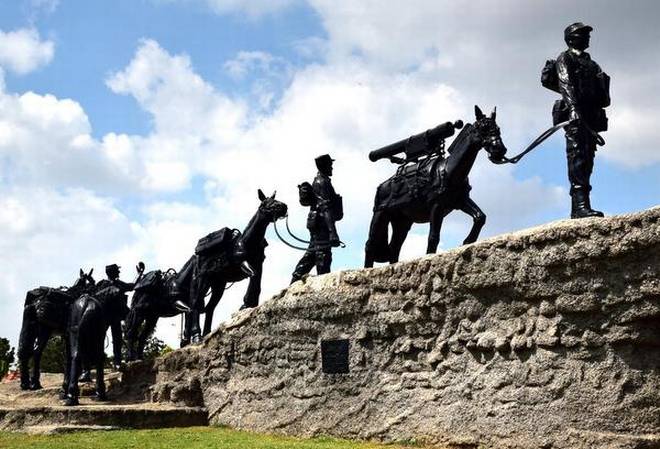
The Indian Army is on the hunt, and this is no ordinary ‘mission’. It is tracking down decommissioned vehicles that it had once used through its vibrant history. The aim is to curate jeeps, trucks, among other vehicles, at the Army’s first Motorised Transport (MT) Heritage Park, which was inaugurated in Bengaluru.
The park, a first of its kind resting place for the Army’s most popular transport vehicles, is an endeavour of the officers of the Faculty of Transport Management, located at the Army Service Corps (ASC) Centre and College, Old Airport Road. The first five vehicles to be displayed at the park were put together painstakingly from 2015 in New Delhi before being transported by road to Bengaluru.
“This is a memorial for the silent transporters of the Indian Army. The idea is based on a similar museum in England. We are trying to get models of all old vehicles used in the Army, but it’s tough as many have been auctioned or scrapped. In the future, the park will also include models of all vehicles which the Army will stop using, like the Ambassador which is slated to be stopped five to six years from now,” said Lieutenant General S.P.S. Katewa, AVSM, Commandant ASC Centre and College.
At present, the park includes a Jeep Willys 4X4, a 3-tonne Shaktiman truck, a Nissan Patrol (JONGA), a Tata-Mercedes Benz (TMB) truck, and a 1-tonne Vahan truck.
Memorial for animals
The ASC Centre also hosts a memorial for pack mules and other animals that the Supply Corps uses extensively. “There was talk during the Kargil War of wanting to cut down on the use of animal transport, but with hard-to-reach front lines in the eastern borders with China, we still continue to use these animals for transport. We are the only corps to use pack mules and we wanted to raise a memorial for these animals as well,” a senior ASC officer said.
The public have to apply for prior permission to view the memorials. “We bring children from schools and colleges here as part of the ‘Know your Army’ programmes. We can permit the public on special days, with proper security arrangements,” Lt. Gen. Katewa said.
Mountain strike corps
17 Corps
The raising of the corps
The Times of India, May 04 2016
Use of war reserves for new corps suicidal
Rajat Pandit
A parliamentary panel has sounded the alarm at the way the Army is being forced to cannibalise its existing reserves to raise the new mountain strike corps needed to acquire effective conventional deterrence against China.
“Milking existing resources, which in some cases are not fully up to authorisation, is suicidal,“ said the parliamentary standing committee on defence in its latest report, tabled on Tuesday .
The committee asked the defence ministry to “critically examine“ the issue and report back within two months.“The committee feels raising of the mountain strike corps is in the interest of national security and recommends that necessary funds for infrastructure development are released for it,“ it said.
In a series of reports, TOI has earlier highlighted how the 1.18-million strong Army was struggling to raise the new mountain strike corps, the 17 Corps, by dipping into its critical war wastage reserves (WWR) in the absence of dedicated funding. This becomes all the more alarming since the Army cannot fight a war beyond 15 days because of crippling shortages in its ammunition stocks, especially for tanks, air defence weapons and anti-tank guided missiles.This, when the approved norm is to hold ammunition for 40 days of “intense“ fighting under the WWR since it can prove critical in winning wars.
“It will not be possible for the Army to reach 100% WWR even by 2019-2020. Moreover, operational deficiencies continue in howitzers, helicopters, air defence weapons, night-fighting capabilities and the like,“ said an official.
The raising of the 17 Corps, with 90,274 additional soldiers, was approved by the UPA-II regime in July 2013 at a cost of Rs 64,678 crore spread over eight years till 2020-2021. But defence minister Manohar Parrikar has repeatedly attacked UPA for sanctioning the 17 Corps in an “arbitrary manner“ without any financial allocation or proper planning. The proposal for another Rs 26,155 crore for infrastructure and capability development along the northern borders is yet to be even approved.
Parrikar has also reiterated that the Army needs to cut down its non-operational flab and manpower in the face of escalating wage and pension bills. Even as a high-level committee is now being set up to look into this, the Army says there is very little scope for manpower cuts till it inducts “cutting-edge technology , platforms and systems“ to offset “boots on the ground“ along the two long unresolved borders with China and Pakistan.
Reforms, structural
2019: Govt approves first set
March 8, 2019: The Times of India
The defence ministry has approved the first batch of reforms in the Army to ‘flatten’ its headquarters in New Delhi, which includes relocation of 229 officers to operational posts, creation of a new post of deputy chief for military operations and strategic planning, and setting up new wings for vigilance and human rights issues under major-generals.
But the larger reforms to transform the over 12.5 lakh strong organisation into a lean, mean, rapidly-deployable and operationally versatile force, which will among other things entail slashing manpower by around 1.5 lakh personnel over the next six-seven years to save around Rs 6,000-7,000 crore annually in revenue expenditure, will have to be approved by the next government after it comes to office.
As was first reported by TOI last year, the Army had conducted four studies on force reorganisation and optimisation, flattening headquarters at different levels, cadre review and terms of engagement for officers and jawans, which are to be implemented after approvals from this year onwards.
Officials said defence minister Nirmala Sitharaman recently approved the first set of reforms, which will include 20% of the officers in the Army headquarters being re-deployed to operational locations. The post of deputy chief of the Army Staff (Strategy), in turn, is being created to deal with military operations, military intelligence, strategic planning and logistics.
The creation of a new information warfare wing is being done in keeping the needs of the future battlefield, hybrid warfare and social media reality in mind. The government has also approved merging of the separate verticals of the DCOAS (planning and strategy) and the Master General Ordnance into one office of the DCOAS (Capability Development and Sustenance).
2010-17: See graphic.
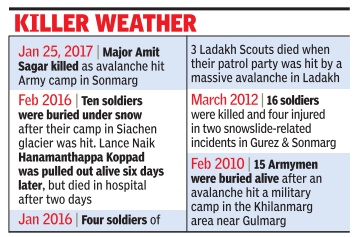
Tenure
Tenures of division, corps commanders
18-mth residual service now needed to be command chief, December 28, 2017: The Times of India
In a major policy change, the Army headquarters has reduced the residual service required for Lt-Generals to be promoted as chiefs of its six operational and one training commands from 24 months to 18 months before superannuation.
Officers say the new policy is part of the overall move to “bring stability” in the command tenures of the seven commands (headed by senior Lt-Generals), 14 corps (Lt-Generals) and over 45 divisions (Major-Generals) in the over 12-lakh strong Army. “Tenures of division and corps commanders are only about 12 months as of now…the aim is to increase the tenures to 18 months,” said an officer.
As per the earlier policy, a Lt-General after commanding a corps could be promoted as an “Army Commander (GOC-in-C)”, depending on seniority, only if he was less than 58 years of age at the time of his appointment.
Under the new policy issued on December 23, Lt-Generals with 18 months of residual service will also now be in the reckoning for what is the second-highest rank (the vicechief and seven Army Commanders) in the force. While all Lt-Generals retire at the age of 60, the Army chief serves till 62 or for three years, whichever is earlier.
One of the first beneficiaries of the new policy is likely to be Lt-General Ranbir Singh, who was the directorgeneral of military operations during the “surgical strikes” conducted against terror launch pads in Pakistan-occupied-Kashmir on September 29 last year, and is now commanding the 1Corps at Mathura.
A committee had earlier recommended a review of the policy of appointing Army Commanders and corps commanders on the basis of their residual service which depends more upon the “fortuitous condition” of their dates of birth rather than merit and capability. Incidentally, the residual service prescribed for the equivalent GOC-in-C rank is just one year in the Navy and IAF.
Terrorist attacks
Defensive arsenal
Sandeep Unnithan , Shields up “India Today” 17/10/2016
Campose panel
[http://indiatoday.intoday.in/story/india-pakistan-loc-indian-army-indian-air-force- pathankot/1/781368.html Sandeep Unnithan , Shields up “India Today” 17/10/2016]
See graphic
Pakistan sponsored
Sandeep Unnithan , Shields up , “India Today” 17/10/2016
See graphic
